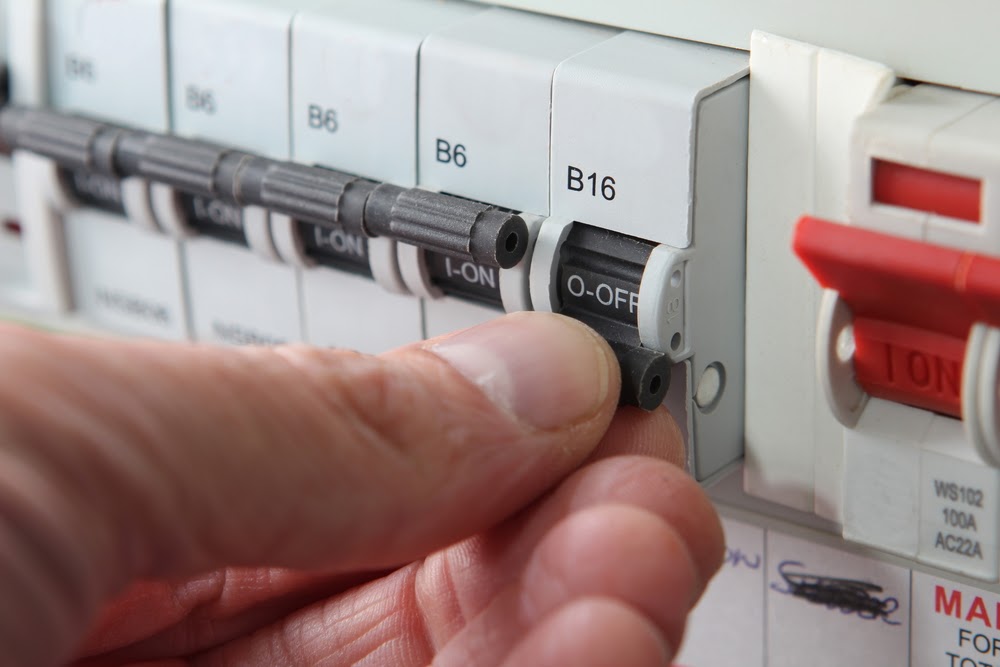
Electrical Safety In The Workplace: A Master Electrician’s Guide
Regardless of what field you’re in, electrical safety in the workplace should be of utmost concern and a priority of those managing employees. Whether you are situated in an office building or a warehouse area, electrical systems pose a risk of injury, and so any and all individuals working within these areas should have an understanding of those risks and how to prevent or handle electrical issues when they arise.
At All Electrics, each of our team members is highly experienced in both commercial and domestic electrical services. So, for those that need to brush up on their electrical safety in the workplace, we’re here to help you through that process.
Detecting Risks & Potential Hazards
Whilst electrical safety in the workplace will, in part, be dictated by the specifics of your workplace and the electrical systems therein, there are risk factors that are relatively common throughout workplaces. The two main ones are:
Direct Exposure
From live wires to exposed electrical components, these are direct threats that can lead to harm or worse due to the risk of electrocution or electrical burns. Keep in mind that not all deaths and injuries due caused by electrical faults are due to the electrocution itself, as shocks can cause falls, issues with medical items such as pacemakers, or even injuries due to getting shocked while working with dangerous machinery.
Indirect Risks
The other major concern for electrical safety in the workplace is the threat of fires or explosions due to electrical faults. This can often be due to old, poorly maintained systems malfunctioning, which is why you should ensure that your building is getting regular electrical safety inspections to avoid any unfortunate surprises.
Remember: In both of these cases, the person impacted does not necessarily have to be working directly with the electrical systems. Electrical safety in the workplace means safety for all employees, not just those that happen to be using machinery.
With all of this in mind, there are things that can be done to lower the risk of similar problems arising before you need to call an electrician:
Powerboards, Powerpoints & Extension Cables
If you’re working in an office environment, chances are your workplace has a large number of powerboards in use at all times. While this is fine on its own, cheap or poorly made powerboards can pose a risk, especially if they’re being overloaded without the correct preventatives in place to avoid damage.
To ensure that your workplace is protected from any unnecessary risks, you should:
- Make sure that all of your powerboards are equipped with overload protection.
- Ensure that all of your powerboards have a designated on/off switch in case of issues.
- Where possible, extension cords should not be overused or used as a permanent fixture.
- Any extension cords/cables that are used should be high-quality and heavy-duty, and those using them should make sure that they aren’t a tripping hazard.
- Never overcrowd a power plug, and this includes the use of multi-plugs, which should be avoided altogether where at all possible.
- Immediately address & report any faulty or damaged power plugs, and a qualified electrician should be brought in to deal with the issue.
- Adequately label any safety switches or items that require labelling.
- Ensure that the switch is turned off when plugging and unplugging appliances.
Using this dot pointed list as a checklist for your workplace will immediately improve your electrical safety. However, there is more that can be done to avoid risks and alleviate electrical issues.
Heating, Cooling & Lighting
As a business owner, you may be under the assumption that all heating and lighting systems are created equal, and this couldn’t be further from the truth. Even putting price and quality aside, there are certain setups and lighting/heating variants that will be safer than others in the long run:
- In general, halogen lamps pose more of a risk than other similar varieties, as they create a large amount of surface heat and have been known to cause fires. Where possible, these should be swapped out for LED lights or other bulbs that don’t convert as much energy to heat.
- The same can be said for fluorescent lighting which requires ventilation if it’s going to be used in a workplace environment.
- If any part of your lighting or heating setup is found to be damaged, it’s important that power is switched off to these components until a qualified electrician can check for faults and repair the issue.
- Under no circumstances should a heating system be left unsupervised when people are not in the workplace.
Teaching Your Staff
At the end of the day, whilst it’s vital that you provide utilities and machinery that is fully-functional and ready to be safely used by your staff, effective electrical safety in the workplace also requires an understanding of those safety measures. So, it’s up to you to ensure that your staff members and colleagues are adequately trained in using any machinery or electrical systems that they require for their job.
It’s also essential that anyone working with electrical equipment is trained in basic CPR and other safety procedures in case something unforeseen goes wrong.
To learn more about your workplace’s safety, or to book a complete safety inspection, contact All Electrics and speak to one of our experienced electricians today.

